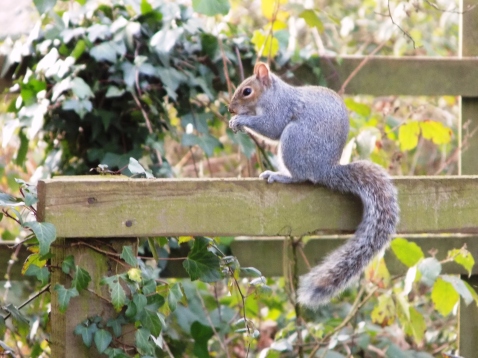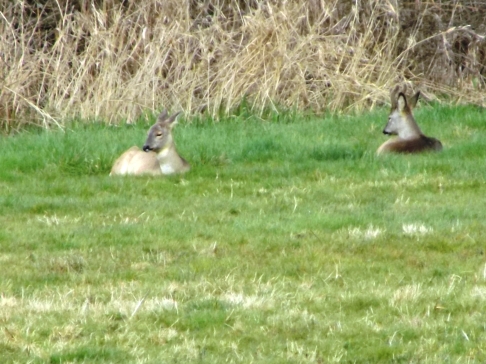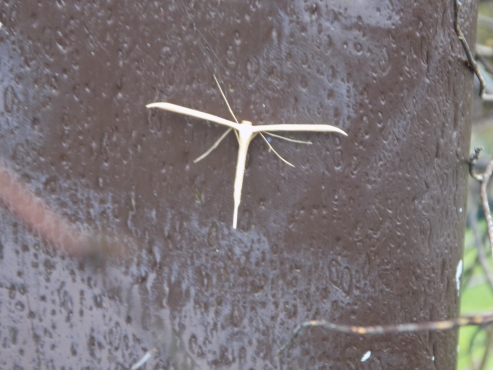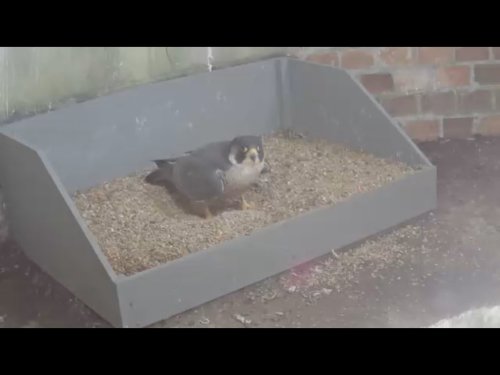Spring is so very close now and the temperature is starting to reflect this. We seem to have spent much of the week here trapped in mist which doesn’t feel very spring-like at all.

I found these wild primroses (Primula vulgaris) this week. The colour of the flowers vary but these are the more common pale yellow colour. The name comes from the old French ‘primerose’ meaning ‘first rose’, highlighting the fact it is one of the earliest flowering plants of the year. Despite the name it bears no relation to true roses.
Not far from these primroses I spotted this grey squirrel munching on something on top of a fence.

It is likely that this squirrel has recently had a litter of young, or is about to. Grey squirrels usually have two litters a year, the first around February/March and the second around June/July. This is likely to be a male squirrel as females are probably with their young in the drey at the moment. Male grey squirrels do not form pair bonds so don’t worry about looking after their young, hence why this individual looks so relaxed!
My other mammal spot of the week were the Avon roe deer. They appeared to be very relaxed when I saw them today, sat on the grass.

Here we can see a female (doe) and a male (buck). This particular doe caught my attention as she is unusually pale for this herd of deer. The colour of the buck is typical for the deer I’ve seen by the Avon but this doe is much lighter. It’s always interesting to see the natural variation of animals, especially when they are likely to have fairly similar genetics. This doe should be easy to identify so I shall name her Sandy and look out for her in future.
I’ve been eagerly awaiting by first butterfly of the year and it appeared today. I didn’t get a great view so couldn’t be sure on the species but from my limited view and the time of year it seems likely it was a brimstone.
I also saw my first moth of the year yesterday, sat on a fence post on the cliff top in Bournemouth. It’s probably a Common Plume moth but is certainly a member of the plume (Pterophoridae) family.

Whilst I was in Bournemouth I also had a look for the peregrine falcons that nest in the clock tower of Bournemouth and Poole college. There were plenty of pigeons around the building, an excellent source of food for the peregrines, but no sign of the falcons themselves. Fortunately there is a handy webcam of their nesting eyrie.

This screenshot was taken this morning where the falcon appeared to be tidying up the nest. Last year the female falcon laid the first eggs in the early hours of the 15th March. If that’s typical then we can expect the eggs to be laid this week! The pair of peregrines successfully raised three young in 2016, two males and a female- with any luck they will do just as well this year.
I shall be keeping an eye on the webcam and will be eagerly awaiting the eggs. You can do the same on this link.

No comments:
Post a Comment